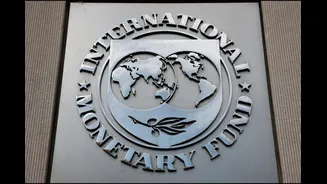India's Economic Allure
The primary driving force behind the influx of foreign capital into Indian banks is India's compelling economic narrative. The country's expanding economy,
fueled by a young demographic and increasing consumption, offers immense growth opportunities for financial institutions. Analysts perceive India as one of the fastest-growing major economies globally, making it an attractive destination for investment. Furthermore, the Indian banking sector is experiencing significant reforms and consolidation, leading to greater efficiency and profitability. These improvements have boosted the confidence of global investors, encouraging them to enter the Indian market. The regulatory environment is also becoming more transparent and conducive to foreign investment, which further supports the trend. Global financial giants are therefore keen to capitalize on these factors, positioning themselves to benefit from India's sustained economic expansion by acquiring or partnering with Indian banks.
Strategic Investment Rationales
Financial giants are drawn to Indian banks not just for immediate gains but also for long-term strategic advantages. Investing in Indian banks allows global entities to tap into the large and underbanked population of India. Furthermore, many foreign investors are seeking to diversify their portfolios and reduce their reliance on mature markets, where growth prospects are relatively limited. The presence of global players can also introduce advanced technologies and best practices to Indian banks, enhancing operational efficiency and customer service. They can also bring specialized financial products and services, such as sophisticated wealth management tools and digital banking solutions. Moreover, such investments can help the global institutions establish a stronger foothold in the region, which is essential for future growth in Asia. These investments, therefore, represent a calculated strategy to secure long-term value, enhance competitive positioning, and benefit from the projected trajectory of the Indian banking sector, rather than just seeking short-term financial returns.
Market Dynamics at Play
The growing interest from global financial institutions is also reshaping the competitive landscape of the Indian banking sector. This surge in investment is accelerating the process of consolidation, with smaller banks potentially merging with larger ones or being acquired by bigger entities. The heightened competition is pushing banks to improve their services and adopt cutting-edge technologies. The entry of foreign players also puts pressure on the existing Indian banks to innovate and become more efficient, ultimately benefiting consumers through better products and services. Furthermore, these investments are changing the balance of power within the industry. Indian banks need to be prepared for enhanced scrutiny from global investors who will introduce new governance standards and operational expectations. As international investment increases, the Indian banking sector is becoming more integrated into the global financial system. Consequently, the sector's performance is becoming more vulnerable to international market fluctuations. These changes will undoubtedly bring significant transformation to India's financial ecosystem, affecting banks, consumers, and the broader economy.
Potential Risks and Rewards
While the influx of foreign capital presents numerous opportunities, it is also accompanied by certain risks. One key concern is the potential for increased volatility, as foreign investors may be more sensitive to global economic conditions. Another potential risk is the need to ensure that foreign entities respect India's specific cultural context and economic priorities. A possible consequence is that the local banking culture may be diluted. However, the benefits are substantial. Greater financial inflows can stimulate economic growth, promote job creation, and support the development of essential infrastructure projects. Furthermore, the adoption of advanced technologies and best practices can enhance the efficiency and competitiveness of the Indian banking sector. Increased investment often leads to greater financial inclusion, offering banking services to a broader segment of the population. Therefore, while risks must be carefully managed through effective regulatory oversight and policy measures, the rewards of these investments—including greater financial stability, innovation, and global integration—hold significant promise for the future.














